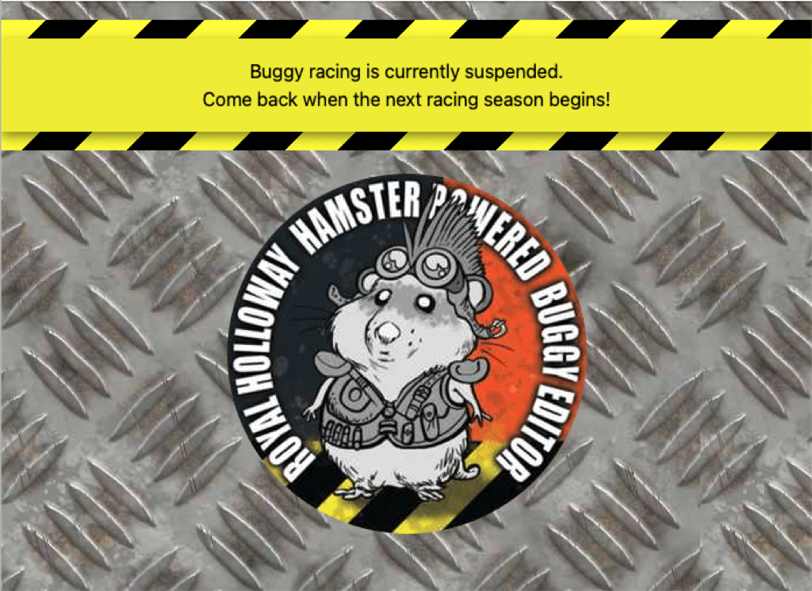Running a static placeholder
Once you’ve shut down the race server, any attempts to connect to it in a browser will, of course, fail. This may well be OK — it’s what happens when any server is offline. But if the URL to the server is one that you might be re-using, and links to it may persist — on your institution’s online learning platform or module website, for example — consider running a static placeholder in its place.
The static site is intended solely to return meaningful content to a human who follows the link. This may be helpful to students and also to staff who are unfamiliar with the project.
This presupposes that you can either remap the DNS settings for your race server to point at the placeholder, or you can put the placeholder content on the host that was running that race server.
A static placeholder could be as simple as a single page that displays a “not running at the moment” message. The limitation of this is that ideally you want to send a meaningful response to any path that might have persistent links. The solution shown below is to run a GitHub Pages site with a custom 404 page. (There is a case for returning 302 Found → the holding page instead, but… this really is just a placeholder!).
If you’re hosting on Heroku (or a service like it), when you switch the DNS away from pointing at it, be aware that the system at the hosting end may reoprt errors (for example, automtatic SSL certificate renewal will probably fail). This isn’t a material problem, but is something you might encounter if the hosting service continues running after you’ve switched the DNS to the static stub. The remedy (other than simply shutting the hosting service down entirely!) is to disable the Custom domain settings there.
An example of a placeholder site
We’ve been running the buggy racing project every year, but it’s only active in the final term. In the other terms, we don’t run the full server (not least because there’s a small cost to doing so). We now use a simple (one-page) GitHub Pages site as a placeholder in the interim, and we change the CNAME record in the DNS settings for the race server’s subdomain to point at that.
We use GitHub Pages because it provides a reliable, free static hosting platform that can run on a custom domain. The repo we used is public at:
It’s a Jekyll site because that’s the mechanism supported by GitHub Pages. The 404 custom page catches URLs to all paths, but is fundamentally a copy of the index page, shown below. In effect we’re stubbing all the page requests, except the index, to a 404. Note that this feature — a custom 404 page — only works on GitHub Pages sites when using a custom URL (which is explicitly what we’re doing).

Screenshot of the RHUL “placeholder” buggy racing site, with message “Buggy racing is currently suspended”.
When we’re ready to run the dynamic race server again, we spin it up (and test it on its local, or heroku-specific, URL), and when it’s ready we change the DNS record to point CNAME back to that.